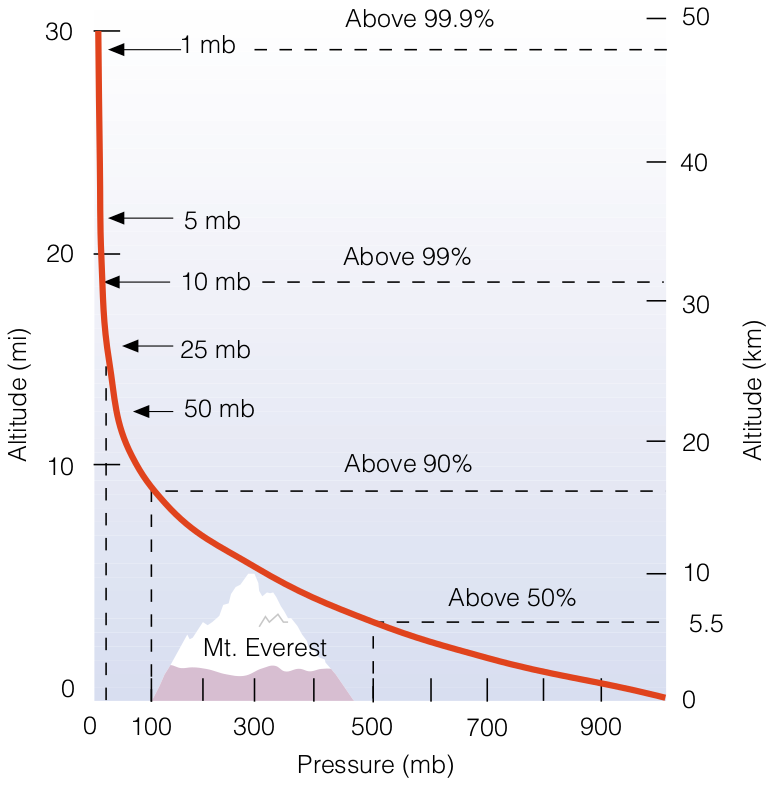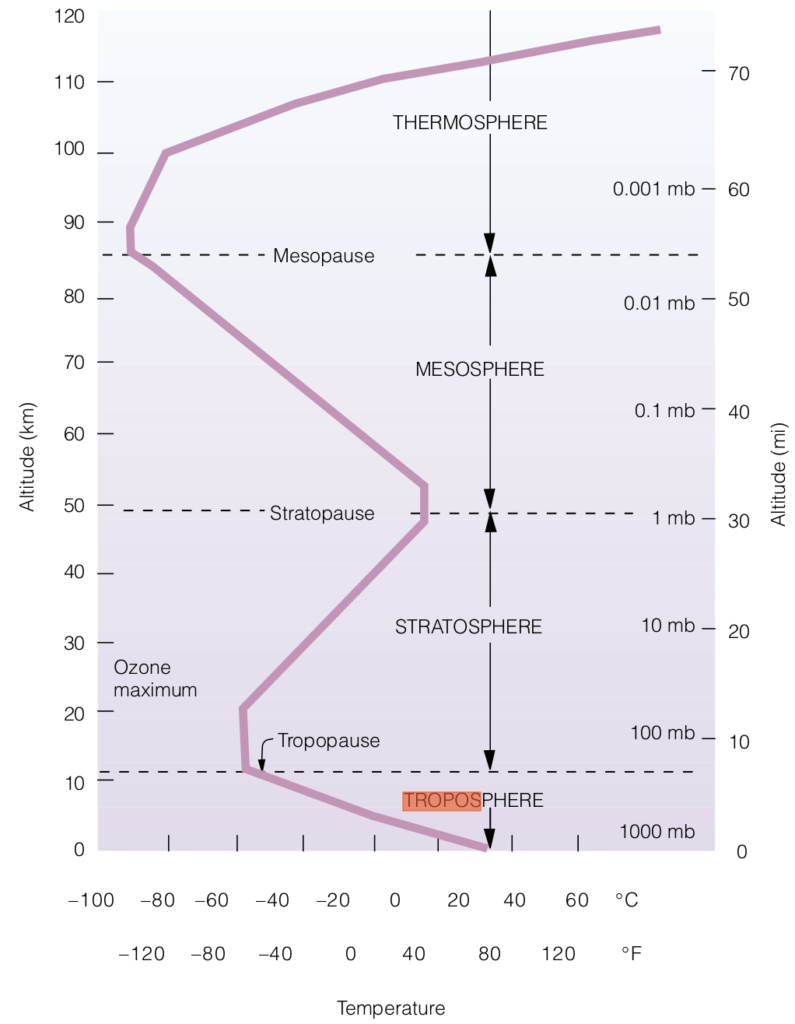Introduction: The Earth’s atmosphere is a remarkable and dynamic layer of gases that envelops our planet. In Part 2 of our weather education series, we’ll explore this atmospheric wonderland and learn about its composition, structure, and the pivotal role it plays in shaping our weather and climate.
The Layers of the Atmosphere: The Earth’s atmosphere is divided into several distinct layers, each with its own unique characteristics:
- Troposphere: The troposphere is the closest layer to Earth’s surface, extending from the ground up to about 10 kilometers (about 6 miles) in altitude. It’s where most weather phenomena, including clouds, storms, and temperature variations, occur. As you ascend in this layer, temperatures generally decrease.
- Stratosphere: Above the troposphere lies the stratosphere, extending from about 10 to 50 kilometers (6-30 miles) in altitude. In this layer, you’ll find the ozone layer, which absorbs harmful ultraviolet (UV) radiation from the sun, making it crucial for protecting life on Earth. Temperature increases with altitude in the stratosphere.
- Mesosphere: The mesosphere extends from approximately 50 to 85 kilometers (31-53 miles) above the Earth’s surface. This layer is characterized by a sharp decrease in temperature as you move upward. It’s also where meteors burn up upon entering Earth’s atmosphere.
- Thermosphere: The thermosphere starts around 85 kilometers (53 miles) and extends into space. It’s called the thermosphere because temperatures here can reach extremely high levels, but it would actually feel very cold to a human due to the low density of molecules. This layer is where the International Space Station orbits.
- Exosphere: The exosphere is the outermost layer of Earth’s atmosphere, transitioning into space. In this region, the density of gas molecules is so low that they can escape into space. Satellites and other objects in low Earth orbit are found in the exosphere.


The Weather: The troposphere, the lowest layer of Earth’s atmosphere, is where all of our weather happens. Wind, driven by temperature and pressure differences, circulates here, creating air currents that influence weather changes. These winds can transport warm, moist air, increasing humidity and precipitation potential. That precipitation can fall as rain, snow, sleet, and hail. It all forms by condensed water droplets or ice crystals, forming clouds. Complex weather systems, such as high and low-pressure systems, fronts, and cyclones, arise from the same temperature gradients and air masses that create the wind.
Additionally, the troposphere plays a crucial role in absorbing heat from the sun, vital for Earth’s energy balance. Solar radiation warms the surface, and the troposphere aids in distributing this heat through convection, influencing weather patterns and climate.
Composition of the Atmosphere: Our atmosphere is primarily composed of nitrogen (about 78%) and oxygen (around 21%). Trace amounts of other gases, including carbon dioxide, argon, and water vapor, make up the remaining 1%. The composition of the atmosphere is crucial for sustaining life on Earth and influencing weather patterns.

Looking at those numbers, it may be tough to wrestle with how something that is as small as 0.0002% (Methane) can have an impact. But 0.0002% of 4,200,000,000 cubic kilometers (the size of the atmosphere) is still a lot. Since 4,200,000,000 km3 is equal to 1,109,522,619,900,000,000,000 gallons, that means 0.0002% of that is still 221,904,524,000,000,000 gallons of Methane in the atmosphere. Smelly!

And, as humans, as we continue to change the composition of our atmosphere (using a propane grill, cow flatulence, campfires, etc) those changes are reflected in our seasonal and annual weather.
The Role of the Atmosphere in Weather: The Earth’s atmosphere acts as a protective blanket, trapping heat and regulating temperatures. It’s responsible for many weather phenomena we experience daily, such as the formation of clouds, precipitation, and the creation of pressure systems that drive winds and storms.
Without our atmosphere, life as we know it on this planet would, likely, not exist.
Take Home: The Earth’s atmosphere is an intricate and dynamic system that significantly impacts our planet’s climate and weather. Understanding its layers, composition, and how it functions is fundamental to grasping meteorology. And we only have this one atmosphere! So it is important that we understand it fully and make sure we take care of it to the best of our ability.
In our next post, we’ll explore temperature and heat, delving into the factors that influence temperature variations and heat transfer within the atmosphere.
If you have any questions or topics you’d like us to cover in this series, please don’t hesitate to reach out. Stay curious and stay tuned for more weather insights!

